Key Takeaways
- Talent development is a long-term strategy focused on improving employee skills, performance, and engagement.
- A strong talent development plan boosts retention, enhances productivity, and aligns workforce capabilities with business goals.
- Future-ready organizations use tech-driven, personalized, and continuous learning approaches to develop and retain top talent.
In today’s hypercompetitive business landscape, organizations can no longer rely solely on traditional recruitment methods to maintain a high-performing workforce. Instead, they must proactively invest in their existing human capital—nurturing skills, enhancing competencies, and preparing employees for future challenges. This is where talent development becomes a critical strategic initiative. Far more than just training, talent development encompasses a comprehensive approach to fostering growth, maximizing potential, and aligning individual capabilities with organizational goals.

At its core, talent development is the structured process of identifying, developing, and retaining top talent within an organization. It focuses on enabling employees to acquire new skills, deepen their expertise, and advance their careers, while also equipping the business with a resilient and adaptable workforce. Whether through personalized learning paths, leadership development programs, coaching, or succession planning, talent development is about cultivating a culture of continuous improvement and lifelong learning.
What sets talent development apart in the modern workplace is its alignment with long-term business strategies. In contrast to reactive approaches that address immediate skill gaps, talent development proactively builds a pipeline of capable leaders and skilled professionals ready to drive innovation and meet future demands. Especially in an era marked by rapid technological change and shifting market dynamics, companies that prioritize talent development are better positioned to stay agile and competitive.
Moreover, organizations that invest in talent development tend to see tangible benefits, including higher employee engagement, increased retention rates, and stronger organizational performance. Employees feel valued when their growth is supported, which in turn fosters loyalty and motivation. On the employer side, reducing turnover and improving internal mobility can significantly cut costs and improve efficiency.
In this comprehensive blog post, we will explore the concept of talent development in depth—examining what it really means, how it works in practice, and why it’s essential for business success. You’ll gain insights into key components of an effective talent development strategy, the processes that drive it, and the best practices used by leading companies to nurture their workforce. Whether you’re an HR professional, a business leader, or a growing company looking to elevate your people strategy, understanding talent development is the first step toward building a more capable and future-ready organization.
Before we venture further into this article, we would like to share who we are and what we do.
About 9cv9
9cv9 is a business tech startup based in Singapore and Asia, with a strong presence all over the world.
With over nine years of startup and business experience, and being highly involved in connecting with thousands of companies and startups, the 9cv9 team has listed some important learning points in this overview of What is Talent Development and How It Works.
If your company needs recruitment and headhunting services to hire top-quality employees, you can use 9cv9 headhunting and recruitment services to hire top talents and candidates. Find out more here, or send over an email to [email protected].
Or just post 1 free job posting here at 9cv9 Hiring Portal in under 10 minutes.
What is Talent Development and How It Works
- What is Talent Development?
- Why Talent Development Matters
- Key Components of a Talent Development Strategy
- The Talent Development Process: How It Works
- Best Practices for Implementing Talent Development
- Challenges in Talent Development and How to Overcome Them
- Future Trends in Talent Development
1. What is Talent Development?
Talent development is a strategic, structured, and continuous process that focuses on enhancing the skills, knowledge, and capabilities of employees to help them succeed in their roles and prepare for future responsibilities. Unlike one-time training sessions, talent development is a long-term investment that aligns employee growth with business objectives.
I. Core Definition of Talent Development
- A subset of human resource management focused on:
- Identifying employee potential
- Providing targeted learning opportunities
- Facilitating career progression and leadership readiness
- Goal:
- To build a high-performing, future-ready workforce
- To bridge skills gaps across departments
- To retain top talent through growth opportunities
II. Key Pillars of Talent Development
1. Learning and Development (L&D)
- Structured training programs
- E-learning platforms and certifications
- Job rotation and cross-training
2. Performance Management
- Setting clear expectations and KPIs
- Providing regular feedback and coaching
- Conducting performance reviews and appraisals
3. Career Pathing and Succession Planning
- Identifying future leaders early
- Mapping out internal career trajectories
- Offering opportunities for advancement
4. Mentorship and Coaching
- Pairing junior employees with senior mentors
- Building a feedback-rich environment
- Encouraging knowledge sharing and collaboration
III. Talent Development vs Talent Management
| Aspect | Talent Development | Talent Management |
|---|---|---|
| Focus | Skill growth and career progression | Recruiting, retaining, and managing human resources |
| Scope | Training, mentoring, coaching, L&D programs | Recruitment, onboarding, engagement, compensation |
| Duration | Ongoing and continuous | Includes both short-term and long-term processes |
| Objective | Building internal capabilities | Optimizing the overall workforce strategy |
| Key Stakeholders | L&D specialists, HR business partners, team leaders | HR managers, recruiters, leadership teams |
IV. Examples of Talent Development in Action
1. Google – Career Development Framework
- Internal mobility encouraged through “gCareer” initiative
- Regular employee check-ins for career planning
- Personalized growth plans with skill maps and stretch goals
2. Deloitte – Leadership Academy
- Online learning programs for leadership development
- Microlearning modules for continuous upskilling
- Data-driven tracking of employee progress and performance
3. IBM – AI Skills Academy
- AI-driven recommendations for training courses
- Customized development plans based on role and aspirations
- Employees offered internal badges and certifications
V. Talent Development Maturity Matrix
| Stage | Description | HR Practices | Employee Experience |
|---|---|---|---|
| Level 1 | Ad hoc training, no structured development plans | Basic onboarding, infrequent training | Confusion about growth opportunities |
| Level 2 | Reactive development based on skill gaps | Occasional workshops, annual performance reviews | Limited visibility into career paths |
| Level 3 | Strategic talent development aligned with business needs | Structured L&D plans, coaching programs | Clear learning paths, improved engagement |
| Level 4 | Fully integrated, data-driven talent development ecosystem | Continuous feedback, advanced LMS platforms | Personalized, self-directed career growth |
| Level 5 | Culture of innovation and learning agility; development is part of the DNA | Predictive analytics, AI-based development planning | Seamless career advancement, high retention |
VI. Talent Development Lifecycle
A[Assess Talent Needs] --> B[Design Development Programs]
B --> C[Implement L&D Initiatives]
C --> D[Track Progress and Feedback]
D --> E[Evaluate ROI and Outcomes]
E --> F[Refine and Iterate Strategy]
VII. Benefits of a Strong Talent Development Program
- For Employees:
- Clearer career growth and role clarity
- Improved job satisfaction and motivation
- Skill enhancement for future employability
- For Employers:
- Reduced turnover and recruitment costs
- Increased internal promotion rates
- Stronger leadership pipeline
- Enhanced innovation and adaptability
VIII. Summary: What Talent Development Truly Means
| Element | Description |
|---|---|
| Vision | Aligning workforce capability with organizational goals |
| Tools | LMS platforms, 360-degree feedback, mentorship tools, data dashboards |
| Approach | Personalized, flexible, continuous learning plans |
| Success Metrics | Promotion rates, engagement scores, training completion rates, productivity |
2. Why Talent Development Matters
Talent development is not just a human resources initiative—it is a strategic driver of business success. As companies face increasing disruption, digital transformation, and workforce shifts, the importance of investing in internal talent development has never been greater. Organizations that build and nurture their internal talent pipeline are better positioned to innovate, adapt, and grow sustainably.
I. Strategic Importance of Talent Development
1. Aligns Workforce Capability with Business Goals
- Ensures employees have the right skills for current and future needs
- Supports organizational agility and transformation
- Aligns learning objectives with KPIs and business strategy
Example:
- Microsoft realigned its workforce with cloud computing demands by retraining 20,000 employees through its internal “Microsoft Learn” platform.
2. Builds a Future-Ready Workforce
- Prepares employees for evolving roles and technologies
- Reduces dependence on external hiring for niche roles
- Fosters internal mobility and reskilling opportunities
Chart: Workforce Skills Obsolescence vs Development Investment
Skill Relevance Over Time Without Talent Development
"Skills remain relevant (<2 years)": 20
"Skills need major upgrade (2-5 years)": 50
"Skills become obsolete (>5 years)": 30
II. Organizational Benefits of Talent Development
1. Increases Employee Retention
- Reduces voluntary turnover through professional growth opportunities
- Creates a sense of value, loyalty, and commitment
- Builds long-term engagement and satisfaction
Example:
- IBM reported a 30% decrease in employee attrition after implementing their career and skill development program.
2. Enhances Productivity and Performance
- Higher employee efficiency through upskilling
- Clearer role expectations and accountability
- Faster problem-solving and innovation
| Performance Metric | Without Talent Development | With Talent Development |
|---|---|---|
| Time to proficiency (weeks) | 20 | 12 |
| Employee engagement score | 63% | 84% |
| Innovation rate (projects/year) | 4 | 11 |
3. Drives Internal Promotions and Leadership Pipelines
- Reduces cost and risk of external hiring
- Strengthens institutional knowledge
- Promotes diversity in leadership roles
Example:
- Deloitte promoted 80% of its senior leaders from within, crediting structured leadership development programs.
III. Financial Impact of Talent Development
1. Reduces Recruitment and Onboarding Costs
- Decreases need to hire externally for every position
- Cuts onboarding time and training expenses
- Improves return on investment in human capital
2. Improves Talent Utilization and ROI
- Maximizes employee potential and productivity
- Enhances performance metrics tied to company growth
- Generates higher revenue per employee
Table: Cost Comparison – Develop vs Hire
| Activity | Cost to Develop (USD) | Cost to Hire Externally (USD) |
|---|---|---|
| Upskilling a current employee | $1,200 | $4,500 |
| Leadership development | $2,000 | $10,000+ |
| Time to productivity | 1–3 months | 6–9 months |
IV. Competitive Advantages from Talent Development
1. Enhances Employer Brand and Talent Attraction
- Attracts high-quality candidates looking for career growth
- Positions the company as a learning-driven workplace
- Improves visibility on employer review platforms
2. Fosters Innovation and Change Adaptability
- Encourages a growth mindset
- Improves agility in shifting market conditions
- Stimulates cross-functional collaboration and ideation
V. Talent Development Impact Matrix
| Talent Development Focus | Employee Outcome | Organizational Outcome |
|---|---|---|
| Personalized learning plans | Higher job satisfaction | Reduced turnover |
| Succession planning | Leadership readiness | Continuity in critical roles |
| Coaching and mentoring | Increased engagement | Improved team performance |
| Cross-training | Skill versatility | Operational flexibility |
| Continuous feedback systems | Faster learning cycles | Improved performance tracking |
VI. Case Study Snapshot: Talent Development ROI
Company: Unilever
- Initiative: “Future Fit” program for digital upskilling
- Results:
- 83% of employees reported improved digital readiness
- $12M saved in recruitment costs by filling roles internally
- 24% increase in promotion satisfaction across teams
VII. Summary: Why It Truly Matters
| Category | Impact of Talent Development |
|---|---|
| Employee Experience | Empowered, motivated, and retained workforce |
| Financial Performance | Reduced costs, increased ROI, greater operational efficiency |
| Innovation Capacity | Agile workforce ready to adapt to change and drive growth |
| Employer Reputation | Strong employer brand that attracts and retains top talent |
3. Key Components of a Talent Development Strategy
A well-crafted talent development strategy is essential for aligning employee growth with organizational objectives. It goes beyond isolated training programs and creates a scalable framework for continuous learning, leadership readiness, and employee engagement. The components outlined below form the foundation of a future-focused, high-impact talent development plan.
I. Talent Identification and Assessment
1. Talent Mapping
- Visualizes current talent across departments and functions
- Identifies high-potential employees (HiPos)
- Assesses leadership bench strength
2. Skills Gap Analysis
- Compares current employee skills against future role requirements
- Uses performance reviews and 360-degree feedback tools
- Informs L&D program design and succession planning
Table: Sample Skills Gap Analysis Framework
| Role | Required Skills | Current Skill Level | Gap | Action Plan |
|---|---|---|---|---|
| Data Analyst | SQL, Python, Data Visualization | Basic | High | Enroll in data bootcamp |
| Sales Executive | CRM, Negotiation, Prospecting | Intermediate | Moderate | Peer coaching + advanced course |
| Marketing Lead | SEO, Analytics, Copywriting | Advanced | Low | Leadership development workshop |
II. Personalized Learning and Development Programs
1. Role-Based Learning Paths
- Custom learning journeys aligned with job functions
- Combines technical, soft, and leadership skill training
- Example: Developer → Tech Lead → Engineering Manager
2. Blended Learning Approaches
- Mix of online courses, in-person workshops, microlearning, and mobile learning
- Encourages flexibility and employee autonomy
Chart: Blended Learning Modalities by Popularity
Preferred Learning Modalities (2025 Survey)
"E-Learning Modules": 35
"Workshops and Seminars": 25
"Microlearning (Mobile)": 20
"On-the-Job Training": 15
"Peer Learning": 5
III. Coaching and Mentoring Programs
1. Structured Mentorship
- Senior employees guide junior or high-potential team members
- Encourages institutional knowledge transfer and retention
- Can be reverse mentoring for tech skills or generational learning
2. Executive Coaching
- One-on-one coaching for leadership development
- Helps align executive behavior with strategic priorities
- Builds emotional intelligence and decision-making capabilities
Example:
- General Electric (GE) uses a “Leadership Growth Council” to pair senior mentors with emerging leaders across divisions.
IV. Career Pathing and Succession Planning
1. Career Progression Frameworks
- Clearly defined paths with milestones, skills, and goals
- Enables employees to visualize long-term growth in the company
- Example: Entry-Level → Mid-Level → Senior → Managerial Roles
2. Succession Planning
- Identifies potential future leaders early
- Uses development plans to prepare them for critical roles
- Reduces disruption in case of role vacancies or retirements
Talent Pipeline Visualization
A[Entry-Level Talent] --> B[Mid-Level Roles]
B --> C[High-Potential Employees]
C --> D[Leadership Development Programs]
D --> E[Senior Leaders / Executives]
V. Performance Management and Feedback Systems
1. Goal Setting and Alignment
- SMART (Specific, Measurable, Achievable, Relevant, Time-bound) goals
- Cascade from corporate objectives to individual performance targets
2. Continuous Feedback
- Shift from annual reviews to frequent feedback loops
- Encourages course correction, motivation, and alignment
- Tools: 360-degree feedback, check-in meetings, OKRs
Table: Annual vs Continuous Feedback
| Aspect | Annual Reviews | Continuous Feedback |
|---|---|---|
| Frequency | Once per year | Weekly or monthly check-ins |
| Agility | Low | High |
| Motivation | Delayed | Real-time reinforcement |
| Engagement | Decreasing over time | Constantly improving |
VI. Learning Technologies and Platforms
1. Learning Management Systems (LMS)
- Centralized platform to deliver, track, and manage training
- Examples: SAP SuccessFactors, Cornerstone, Docebo
2. AI and Data-Driven Learning
- Personalized content recommendations based on role, behavior, and goals
- Predictive analytics for learning impact and talent forecasting
- Chatbots and virtual instructors for just-in-time learning
3. Internal Knowledge Hubs
- Wikis, video libraries, and forums for peer-driven learning
- Encourages collaborative knowledge-sharing culture
VII. Recognition and Rewards for Development
1. Certification and Badging
- Formal recognition for skill mastery and course completion
- Encourages accountability and learning motivation
- Public or internal display (LinkedIn, intranet)
2. Career Incentives
- Promotions tied to skill development
- Salary increments based on certified competencies
- Visibility in talent mobility or project assignment decisions
Example:
- PwC’s “Digital Fitness App” rewards employees with digital badges that translate into real-world career benefits.
VIII. Culture of Continuous Learning
1. Learning as a Core Organizational Value
- Leadership advocates for and participates in development
- Teams encouraged to spend “learning hours” weekly/monthly
2. Psychological Safety and Innovation
- Mistake-tolerant culture fosters experimentation
- Learning from failure becomes a tool for improvement
IX. Integration with Business Goals
1. Strategic Alignment
- Talent development tied to KPIs and revenue targets
- Example: Developing AI skills in the workforce to meet a digital transformation goal
2. Learning ROI and Analytics
- Metrics tracked: course completion, promotion rates, productivity uplift
- Informs future investments and fine-tuning of programs
KPI Dashboard Example
| Metric | Target | Current | Status |
|---|---|---|---|
| Employee Development Hours | 40 hrs/year | 38 hrs/year | On Track |
| Promotion Rate of HiPo Talent | 20% | 18% | Needs Improvement |
| Course Completion Rate | 90% | 93% | Exceeding |
| Learning Satisfaction Score | 85% | 88% | Exceeding |
X. Summary: Talent Development Strategy Essentials
| Component | Purpose | Impact |
|---|---|---|
| Talent Mapping | Identify and classify workforce potential | Targeted development efforts |
| Personalized Learning | Deliver relevant and flexible education | Increased engagement and skill mastery |
| Coaching & Mentorship | Support and grow future leaders | Knowledge transfer and loyalty |
| Career Pathing | Empower employees with clarity and goals | Internal mobility and retention |
| Feedback Systems | Real-time performance management | Agile and responsive teams |
| Technology Platforms | Enable scalable, data-driven learning | Operational efficiency and insight |
| Recognition & Rewards | Motivate and reinforce positive behavior | Culture of development and excellence |
| Strategic Integration | Align with business objectives and outcomes | Measurable ROI and competitive advantage |
4. The Talent Development Process: How It Works
The talent development process is a structured, strategic, and cyclical approach to cultivating employee potential in alignment with organizational goals. It transforms workforce planning into a proactive and data-driven process—starting from talent assessment to evaluation of impact—ensuring that employees are continuously learning, growing, and contributing meaningfully to business success.
I. Step-by-Step Overview of the Talent Development Process
A[Assess Workforce Needs] --> B[Identify Talent & Gaps]
B --> C[Design Development Plans]
C --> D[Deliver Learning Programs]
D --> E[Monitor Progress & Provide Feedback]
E --> F[Measure Impact & Adjust Strategies]
II. Step 1: Assess Workforce and Business Needs
1. Align with Organizational Strategy
- Identify current and future skill requirements
- Link workforce capabilities to strategic business goals
- Example: Transitioning to digital products may require cloud, AI, or data analytics skills
2. Conduct Environmental Scanning
- Monitor industry trends, competitor benchmarks, and technology evolution
- Evaluate external factors influencing talent demand
Table: Organizational Strategy vs Talent Needs
| Strategic Initiative | Talent Requirement | Development Focus Area |
|---|---|---|
| Digital Transformation | Cloud Engineers, Data Analysts | Reskilling in tech and data literacy |
| Geographic Expansion | Multilingual Sales, Regional Managers | Cross-cultural training |
| New Product Innovation | R&D, Product Designers, Agile Teams | Creative thinking, rapid prototyping |
III. Step 2: Identify Talent and Skill Gaps
1. Talent Inventory
- Assess existing competencies through self-assessments, manager reviews, and HRIS data
- Categorize employees into segments: HiPos, key performers, skill-gap individuals
2. Skills Gap Analysis
- Compare current vs required skills for each role
- Prioritize urgent gaps for immediate development
Skills Gap Matrix Example
| Team/Function | Required Competency | Current Proficiency | Gap Level | Action |
|---|---|---|---|---|
| IT Department | Cybersecurity | Intermediate | High | Enroll in certification |
| HR Team | People Analytics | Basic | Medium | Internal workshop |
| Sales Team | CRM Mastery | Advanced | Low | Coaching sessions |
IV. Step 3: Design Individual and Organizational Development Plans
1. Personalized Development Roadmaps
- Set short-term and long-term career goals
- Match learning content to role, experience, and aspirations
- Include certifications, projects, mentoring, and stretch assignments
2. Organizational Capability Building
- Build academies or functional training programs
- Develop leadership pipeline through rotational programs
Example:
- Amazon’s Career Choice Program offers hourly workers fully-funded training aligned with in-demand roles, both within and outside the company.
V. Step 4: Deliver Learning and Development Programs
1. Diverse Learning Modalities
- In-person workshops, virtual instructor-led training (VILT), self-paced online modules
- Peer learning, gamified content, and microlearning formats
2. Integration of Technology
- Use Learning Management Systems (LMS) to assign, track, and analyze training
- Deploy AI-driven platforms to offer personalized content recommendations
Chart: Talent Development Delivery Channels by Popularity (2025)
Preferred Talent Development Channels
"Online Learning (LMS)": 40
"Instructor-Led Training": 25
"On-the-Job Training": 20
"Mentorship/Coaching": 10
"Peer Learning": 5
VI. Step 5: Monitor Progress and Provide Continuous Feedback
1. Performance Tracking
- Set learning milestones and KPIs
- Monitor course completions, skills application, and behavior change
- Tools: dashboards, OKRs, feedback surveys
2. Regular Coaching and Feedback
- Conduct manager check-ins and mentoring sessions
- Reinforce learning through project work and knowledge sharing
Talent Development Monitoring Dashboard Sample
| Metric | Target | Current | Trend |
|---|---|---|---|
| Completion Rate (%) | 90 | 87 | Improving |
| Engagement Score | 80 | 76 | Slight decline |
| Certifications Earned | 500 | 550 | Exceeding target |
| Skills Applied on Job (%) | 70 | 65 | Steady |
VII. Step 6: Measure Impact and Adjust Strategies
1. Evaluate ROI of Development Programs
- Use Kirkpatrick’s Four-Level Model:
- Reaction (learner satisfaction)
- Learning (skills gained)
- Behavior (application on the job)
- Results (business impact)
2. Adjust Based on Data and Feedback
- Refine learning content, delivery channels, and schedules
- Retarget underperforming programs and scale successful initiatives
Kirkpatrick’s Evaluation Matrix
| Level | Evaluation Focus | Measurement Methods |
|---|---|---|
| Level 1 | Reaction | Surveys, Net Promoter Score (NPS) |
| Level 2 | Learning | Pre- and post-assessments, quizzes |
| Level 3 | Behavior | Manager feedback, performance metrics |
| Level 4 | Results | Sales growth, productivity, quality metrics |
VIII. Example: End-to-End Talent Development in Practice
Case Study: SAP
- Assessment: Identified skill gaps in digital literacy across global workforce
- Design: Launched “SAP Learning Hub” with curated learning paths
- Delivery: Blended model with coaching, gamified e-learning, and real-time labs
- Monitoring: Used analytics to track learning behavior and promotion outcomes
- Impact: 22% increase in internal mobility, 35% boost in employee retention
IX. Summary: The Talent Development Process at a Glance
| Step | Objective | Key Activities |
|---|---|---|
| Assess Needs | Align skills with business priorities | Talent audits, strategy mapping |
| Identify Gaps | Find skill shortages and high-potential talent | Gap analysis, assessments, segmentation |
| Design Plans | Create learning and growth roadmaps | Personal and organizational learning pathways |
| Deliver Programs | Execute development initiatives | Training sessions, mentorship, digital learning |
| Monitor Progress | Ensure real-time tracking and engagement | Feedback loops, dashboards, coaching |
| Measure Impact | Prove ROI and refine for future growth | Evaluation models, analytics, strategic feedback implementation |
5. Best Practices for Implementing Talent Development
Implementing a successful talent development strategy requires more than just providing learning opportunities. It involves cultivating a learning-centric culture, integrating strategic business alignment, leveraging modern tools, and continuously measuring effectiveness. Organizations that follow best practices can ensure their talent development efforts are impactful, scalable, and sustainable.
I. Align Talent Development with Business Strategy
1. Strategic Workforce Planning
- Match development goals with long-term business objectives
- Prioritize skills that will enable digital transformation, expansion, or innovation
- Example: A fintech company investing in blockchain skills to support future product offerings
2. Leadership Involvement
- Engage executives in defining the talent agenda
- Encourage leaders to model learning behaviors
- Integrate learning KPIs into leadership performance metrics
Table: Alignment Map – Business Goals to Talent Development
| Business Priority | Required Talent Capability | Development Initiative |
|---|---|---|
| Entering new markets | Cross-cultural communication, sales | Global leadership training |
| Driving innovation | Creative thinking, agile mindset | Design thinking workshops |
| Enhancing customer service | Emotional intelligence, CRM usage | Soft skills + technical systems training |
II. Establish a Learning-Centric Culture
1. Encourage Continuous Learning
- Promote self-directed learning opportunities
- Allocate “learning hours” or “upskilling days” monthly
- Recognize and reward learning milestones
2. Normalize Failure as Learning
- Emphasize learning from experimentation
- Create a psychologically safe environment for growth
Example:
- Adobe’s “Learning Fund” reimburses employees up to $10,000 annually for education expenses, reinforcing a lifelong learning mindset.
III. Personalize Learning and Development
1. Role-Based Learning Paths
- Tailor development journeys by department, function, and seniority
- Use data to recommend relevant content and experiences
2. Adaptive Learning Technologies
- Deploy AI-powered LMS platforms to dynamically adjust content
- Offer learning in various formats: microlearning, video, articles, projects
Personalized Learning Roadmap Template
| Employee Role | Short-Term Goal | Skill Gaps | Learning Path | Timeline |
|---|---|---|---|---|
| Marketing Analyst | Improve SEO expertise | SEO, Google Analytics | Google Cert + on-the-job project | 3 months |
| IT Specialist | Prepare for cloud migration | AWS, Docker, Kubernetes | AWS Cloud Practitioner + sandbox simulation | 6 months |
IV. Use Blended Learning Approaches
1. Combine Formal and Informal Learning
- Instructor-led training + e-learning + peer-to-peer sharing
- Enable learning through job shadowing and cross-functional projects
2. Leverage Digital Tools
- Learning Experience Platforms (LXPs): EdApp, Degreed, Docebo
- Mobile learning for anytime, anywhere access
Chart: Blended Learning Components
Effective Learning Modalities (Enterprise Case Study)
"Self-Paced Online": 35
"Instructor-Led Sessions": 25
"On-the-Job Training": 20
"Peer Learning & Mentorship": 15
"Gamified Learning": 5
V. Create Clear Career Pathways and Mobility Frameworks
1. Internal Career Pathing
- Offer transparent promotion tracks and skill expectations
- Provide access to career coaches and performance consultants
2. Internal Mobility Programs
- Encourage cross-functional or cross-regional transfers
- Use internal job boards and internal talent marketplaces
Example:
- Unilever’s FLEX program enables employees to explore temporary internal roles, supporting both learning and workforce flexibility.
Career Path Progression Framework
| Level | Title | Required Competencies | Learning Interventions |
|---|---|---|---|
| Entry-Level | Business Analyst I | Excel, communication, critical thinking | Onboarding + basic skills training |
| Mid-Level | Business Analyst II | Data storytelling, SQL, stakeholder mgmt | Project-based learning + mentorship |
| Senior-Level | Senior Analyst / Lead | Strategy, budgeting, team leadership | Leadership workshop + coaching |
VI. Develop Coaching and Mentoring Programs
1. Mentorship Matching Systems
- Pair mentors and mentees based on goals, interests, and experience
- Track interactions and outcomes to refine matching
2. Group Coaching and Peer Learning Circles
- Facilitate discussion-led learning in small, cross-functional groups
- Encourage problem-solving and collaborative growth
Example:
- Cisco’s “Job Shadow Program” allows junior employees to shadow senior leaders for experiential learning and career insights.
VII. Monitor Progress and Provide Real-Time Feedback
1. Use Performance and Learning Dashboards
- Track completion rates, knowledge retention, and goal progression
- Integrate with OKRs and individual performance reviews
2. Frequent Manager Check-Ins
- Replace annual reviews with bi-weekly/monthly check-ins
- Use coaching conversations to align on development goals
Talent Development Metrics Dashboard
| Metric | Goal | Current | Trend |
|---|---|---|---|
| Average Learning Hours/Employee | 40/year | 36/year | Steady |
| Skill Certification Rate (%) | 85% | 78% | Improving |
| Internal Mobility Rate (%) | 20% | 24% | Exceeding Target |
| Promotion Rate of HiPo Talent | 15% | 13% | On Track |
VIII. Measure ROI and Continuously Improve
1. Apply Learning Evaluation Models
- Use Kirkpatrick’s 4 Levels or Phillips ROI model
- Evaluate both short-term satisfaction and long-term business impact
2. Iterate Based on Feedback and Data
- Conduct learner pulse surveys and post-program interviews
- Retire low-performing modules and double down on successful ones
Kirkpatrick Evaluation Matrix Recap
| Level | What It Measures | Measurement Method |
|---|---|---|
| Level 1 | Learner Reaction | Post-training surveys, NPS |
| Level 2 | Knowledge Acquisition | Pre- and post-training tests |
| Level 3 | Behavior Change | Manager assessments, application logs |
| Level 4 | Business Results | Revenue growth, retention metrics |
IX. Secure Buy-In from All Stakeholders
1. HR, L&D, and Business Unit Collaboration
- Cross-functional governance to align development priorities
- Co-design training with team leads for relevance
2. Employee Involvement
- Encourage feedback loops and co-creation of content
- Use ambassadors or learning champions to promote programs
Example:
- Salesforce’s Trailhead Ambassadors promote learning paths and engage peers through gamified contests and events.
X. Summary: Best Practices at a Glance
| Best Practice Area | What to Do | Why It Matters |
|---|---|---|
| Strategic Alignment | Link talent development to business goals | Ensures long-term relevance and executive support |
| Personalized Learning | Tailor content to individual roles and needs | Boosts engagement and skill application |
| Culture of Learning | Promote continuous, social, and experiential learning | Builds a growth-focused, adaptable workforce |
| Career Mobility | Map career paths and encourage lateral/internal movement | Increases retention and reduces external hiring |
| Coaching and Feedback | Regular mentoring, coaching, and performance conversations | Reinforces learning and fosters accountability |
| Measurement and Optimization | Monitor metrics, evaluate ROI, and adapt initiatives | Ensures ongoing improvement and cost-effectiveness |
| Cross-Functional Collaboration | Align HR, L&D, and departments on shared talent goals | Drives enterprise-wide participation and ownership |
6. Challenges in Talent Development and How to Overcome Them
Despite the growing emphasis on upskilling and talent nurturing, organizations often encounter significant roadblocks in executing effective talent development strategies. These challenges can stem from a lack of strategic alignment, budgetary constraints, resistance to change, or ineffective measurement. Addressing these challenges requires deliberate planning, stakeholder engagement, and the strategic use of technology and data.
I. Lack of Strategic Alignment
Challenge
- Development programs often operate in silos, disconnected from business goals.
- Employees pursue learning with no clear path to business value or advancement.
- Senior leaders may not see immediate ROI, leading to reduced buy-in.
Solutions
- Integrate talent development initiatives with organizational KPIs and strategic objectives.
- Conduct capability gap analyses to identify development priorities.
- Engage leadership in talent strategy creation and accountability.
Example:
- A global logistics firm tied upskilling in data analytics directly to reducing delivery inefficiencies and improved logistics forecasting accuracy by 18% in 12 months.
Table: Aligning Learning Initiatives with Strategic Objectives
| Business Goal | Skill Needed | Learning Solution | Outcome Metric |
|---|---|---|---|
| Expand e-commerce footprint | Digital marketing, SEO | Role-specific certifications | Customer acquisition rate |
| Strengthen innovation pipeline | Design thinking, prototyping | Cross-functional innovation bootcamps | Number of new product launches |
| Reduce operational costs | Lean, Six Sigma | Lean process training + Kaizen events | Cost savings per unit produced |
II. Insufficient Learning Culture
Challenge
- Learning is viewed as optional or low priority.
- Employees lack time or motivation to engage in development.
- Managers fail to encourage or model development behavior.
Solutions
- Embed learning into daily workflows (e.g., learning nudges, just-in-time modules).
- Provide formal incentives for learning (e.g., certifications linked to bonuses).
- Empower managers to prioritize employee development.
Example:
- Google’s “20% time” policy encourages employees to devote 20% of their time to passion projects, many of which are skill-building.
Learning Culture Maturity Matrix
| Category | Low Maturity | Mid Maturity | High Maturity |
|---|---|---|---|
| Leadership Support | Minimal involvement | Periodic engagement | Active sponsorship and role modeling |
| Learning Accessibility | Centralized, outdated LMS | Mixed delivery methods | Integrated, on-demand digital platforms |
| Recognition & Rewards | None or generic | Ad hoc incentives | Strategic, performance-tied recognition |
III. Skill Gaps are Evolving Too Quickly
Challenge
- Rapid tech changes render training content obsolete quickly.
- Difficult to keep curricula current across all departments.
- Employees feel overwhelmed by constant change.
Solutions
- Use agile learning design to update modules regularly.
- Prioritize future-proof, transferable skills (e.g., data literacy, adaptability).
- Leverage AI-driven LMS platforms that track industry trends and auto-update content.
Example:
- A software company introduced a quarterly review cycle for their LMS content, boosting course relevance and completion rates by 37%.
Chart: Top Fast-Evolving Skills (2025)
Top 5 Rapidly Changing Skills
"AI/ML Tools": 85
"Cloud Infrastructure": 80
"Cybersecurity Protocols": 75
"Data Visualization": 70
"DevOps Practices": 65
IV. Budget Constraints
Challenge
- L&D departments are often underfunded or seen as cost centers.
- Quality content and platforms require investment that is hard to justify without short-term ROI.
- Small businesses struggle to scale development initiatives.
Solutions
- Focus on high-impact, low-cost options such as peer learning, internal SMEs, and open-source content.
- Start with pilot programs and use data to justify expansion.
- Apply cost-sharing models across departments or joint ventures with training providers.
Example:
- A mid-sized healthcare firm used internal subject matter experts to deliver training, reducing content costs by 60% annually.
Table: Cost-Efficient Talent Development Alternatives
| Traditional Cost Area | Alternative Solution | Estimated Savings (%) |
|---|---|---|
| External trainers & consultants | Internal SMEs & cross-training | 40–60% |
| Custom content development | Curated content from LMS providers | 30–50% |
| Instructor-led workshops | Virtual, self-paced modules | 50–70% |
V. Lack of Personalization in Learning
Challenge
- One-size-fits-all training fails to address individual learning needs or job-specific competencies.
- Employees disengage due to irrelevant or repetitive content.
Solutions
- Implement role-based learning pathways and modular content.
- Use learning analytics to recommend personalized learning experiences.
- Leverage AI and adaptive learning platforms.
Example:
- IBM’s “Your Learning” platform uses AI to deliver personalized learning content based on job role, previous activity, and business priorities.
Table: Impact of Personalization on Learning Metrics
| Metric | Non-Personalized | Personalized |
|---|---|---|
| Completion Rate (%) | 42% | 73% |
| Knowledge Retention (%) | 55% | 81% |
| Employee Satisfaction (NPS) | +20 | +46 |
VI. Difficulty Measuring Learning ROI
Challenge
- Many companies fail to track whether development initiatives result in behavior or performance improvement.
- ROI often seen as intangible or long-term.
Solutions
- Set clear KPIs before launching learning initiatives.
- Use models such as Kirkpatrick or Phillips ROI to track learning outcomes.
- Connect learning metrics to performance management systems.
Example:
- A retail company tracked sales reps who completed negotiation training and found their close rates increased by 22% within six months.
Kirkpatrick-Phillips Evaluation Comparison Table
| Model | Measures | Use Case |
|---|---|---|
| Kirkpatrick | Reaction, Learning, Behavior, Results | Best for behavioral and performance shifts |
| Phillips ROI | All of Kirkpatrick + Financial ROI | Ideal for justifying financial investment |
VII. Resistance to Change
Challenge
- Employees may see training as disruptive, irrelevant, or threatening.
- Managers may fear loss of control or exposure of capability gaps.
Solutions
- Engage employees in co-creating development paths and selecting training methods.
- Share success stories and data demonstrating value.
- Provide coaching to managers to become learning enablers, not enforcers.
Example:
- An insurance firm created a learning ambassador program where peers promoted training, resulting in 2.5x more voluntary participation.
Table: Change Management Tactics for L&D
| Barrier | Intervention | Result |
|---|---|---|
| Employee apathy | Gamify learning + social recognition | Higher motivation and completion |
| Manager resistance | Training on coaching and feedback | Increased support for team learning |
| Cultural misalignment | Incorporate learning into onboarding | Stronger adoption from Day 1 |
VIII. Limited Technological Infrastructure
Challenge
- Legacy systems hinder learning delivery, analytics, and engagement.
- LMS platforms may lack mobile access or personalization capabilities.
Solutions
- Invest in cloud-based, scalable learning technology.
- Ensure seamless integration with HRIS and performance systems.
- Adopt mobile-first design for accessibility.
Example:
- A telecom company adopted a mobile-first LXP, which led to a 48% increase in mobile learning adoption within the first 6 months.
Feature Matrix: Traditional LMS vs. Modern LXP
| Feature | Traditional LMS | Modern LXP |
|---|---|---|
| Mobile Compatibility | Limited | Full Access |
| Personalization | Basic or None | AI-Driven |
| Social Learning | None | Embedded |
| Real-Time Analytics | Delayed or manual | Instant insights |
| Gamification | Not supported | Built-in |
Summary: Talent Development Challenge-Resolution Map
| Challenge | Root Cause | Recommended Solution |
|---|---|---|
| Misalignment with business strategy | Siloed L&D efforts | Align learning with KPIs and business goals |
| Poor learning culture | Lack of leadership role-modeling | Promote learning incentives & visibility |
| Rapid skill evolution | Static learning content | Agile learning design & real-time updates |
| Budget limitations | High cost of content/instructors | Leverage internal SMEs & digital learning |
| Low engagement in training | Irrelevant, generic learning | Implement adaptive, personalized pathways |
| No clear ROI measurement | Lack of data and evaluation model | Use Kirkpatrick or Phillips ROI framework |
| Resistance to change | Fear and lack of involvement | Co-create learning experiences |
| Outdated technology | Legacy LMS | Adopt cloud-based, mobile LXPs |
7. Future Trends in Talent Development
As we move further into a digitally connected, AI-enhanced, and hybrid work world, talent development is undergoing a profound transformation. Companies that want to remain competitive must embrace forward-thinking strategies that prepare their workforce for the future. This section explores the emerging trends shaping the future of talent development in 2025 and beyond.
I. Technology-Driven Talent Development
1. Integration of Artificial Intelligence (AI)
- Personalized learning experiences through AI-driven recommendations
- Real-time skills gap analysis for individuals and teams
- Smart career pathing based on performance and aspirations
Example:
- IBM Watson delivers AI-curated training content tailored to each employee’s learning history and job role.
2. Virtual Reality (VR) and Augmented Reality (AR) for Immersive Learning
- Interactive simulations for leadership training, customer service, or technical skills
- Safe and scalable virtual environments for hands-on learning
- Enhanced employee engagement and retention
| VR/AR Use Case | Impact |
|---|---|
| Leadership simulations | 40% improvement in decision-making skills |
| Safety and compliance drills | 60% faster onboarding for new hires |
| Product demos and sales | 35% increase in client conversion rate |
3. Learning Experience Platforms (LXPs)
- Combines content curation, social learning, and AI
- Empowers employees to take charge of their own development journey
- Enables microlearning, mobile-first content, and on-demand access
Popular LXPs:
- Degreed
- EdCast
- Fuse Universal
II. Shift Toward Skills-Based Talent Development
1. Rise of Skills Taxonomies and Frameworks
- Moving from roles-based development to skill clusters
- Mapping skills to emerging industry demands (e.g., digital, sustainability, analytics)
Example Matrix:
| Role | Core Skills | Emerging Skills |
|---|---|---|
| Data Analyst | SQL, Excel, Python | Data ethics, storytelling, GenAI use |
| HR Manager | Recruitment, compliance | People analytics, DEI strategy |
| Software Engineer | Coding, testing | Cloud-native, MLOps, security-by-design |
2. Credentialing, Badging & Micro-Certifications
- Short, stackable learning modules to validate skill acquisition
- Supports lifelong learning and internal mobility
- Aligns with industry-recognized standards
Example:
- Google Career Certificates and Coursera Specializations are now widely accepted by employers as credible skill indicators.
III. Personalized, Employee-Centric Development
1. Custom Learning Paths
- Tailored to each employee’s role, goals, and preferences
- Drives autonomy, motivation, and engagement
- Powered by behavioral data and feedback loops
2. Real-Time Feedback and Adaptive Learning
- Constant updates to content based on learner performance
- AI suggests remediation or advancement modules automatically
- Supports just-in-time learning in the workflow
| Traditional Approach | Future-Ready Personalized Approach |
|---|---|
| Fixed training curriculum | AI-curated learning journeys |
| Annual performance reviews | Real-time feedback and skill analytics |
| One-size-fits-all training | Adaptive learning engines |
IV. Human-Centered and Inclusive Development Models
1. Emphasis on DEI (Diversity, Equity, Inclusion) in Learning
- Ensuring equitable access to development opportunities
- Culturally responsive training content and delivery
- Leadership pipelines focused on underrepresented groups
Example:
- Accenture integrates inclusive leadership modules into all mid-level manager training programs.
2. Employee Well-being as a Development Priority
- Mental health, work-life balance, and emotional intelligence training
- Promoting holistic employee success beyond performance metrics
V. Continuous Learning Culture
1. Learning in the Flow of Work
- Embedding training into daily tools like Slack, Microsoft Teams, etc.
- Reduces time away from productivity
- Encourages frequent learning “bursts”
2. Peer-to-Peer and Social Learning
- Encouraging internal mentorships, expert-led sessions, and communities of practice
- Supports knowledge retention and engagement
- Makes learning more collaborative and embedded in culture
VI. Data-Driven Talent Development
1. Predictive Analytics for Talent Planning
- Anticipate future skills needs using labor market and internal data
- Identify high-potential talent early
- Model various upskilling/reskilling pathways
2. Learning ROI Measurement
- Evaluate impact of learning on business outcomes
- Link development with performance, retention, and promotion metrics
Learning ROI Dashboard Example:
| Metric | Before Program | After Program |
|---|---|---|
| Internal promotion rate | 12% | 27% |
| Employee engagement score | 65% | 88% |
| Average time to upskill | 6 months | 3.5 months |
VII. The Gig Economy and Agile Talent Development
1. Preparing for Freelancers and Contingent Workers
- Modular, flexible training for project-based talent
- Short-term certifications and onboarding tools
2. Agile Talent Pools
- Building internal “talent marketplaces” where employees match to short-term gigs based on skills
- Promotes agility and internal mobility
Example:
- Unilever’s U-Work Model allows employees to rotate through flexible, project-based engagements with full access to training and benefits.
VIII. Environmental and Social Responsibility in Development
1. Green Skills Development
- Upskilling for sustainability and environmental compliance roles
- Preparing workforce for green energy, ESG reporting, and circular economy initiatives
2. Social Impact Learning Initiatives
- Volunteering, sustainability projects, and community engagement programs as part of development
IX. Summary: Talent Development in 2025 and Beyond
| Trend | Strategic Value |
|---|---|
| AI & LXP Integration | Personalized, scalable, data-driven development |
| Skills-first Models | Increases workforce agility and internal mobility |
| DEI & Well-being Prioritization | Builds inclusive and resilient workplace cultures |
| Learning in the Flow of Work | Enhances retention and productivity |
| Predictive Analytics & ROI Tracking | Aligns learning investment with business outcomes |
Conclusion
Talent development is no longer a luxury or optional HR function—it has evolved into a core business strategy that directly influences organizational success, employee satisfaction, and long-term competitiveness. As industries face rapid digital transformation, shifting workforce expectations, and increased global competition, the ability to effectively attract, develop, and retain skilled talent is a decisive factor in an organization’s growth trajectory.
At its core, talent development is about unleashing the full potential of your workforce—not just through skills training, but by creating structured, ongoing, and personalized opportunities for every employee to thrive. From onboarding and learning management to performance feedback, career pathing, and leadership development, it encompasses every touchpoint where growth and capability can be nurtured.
Organizations that invest in talent development strategies not only experience higher levels of employee engagement and retention, but also build stronger internal talent pipelines, reduce hiring costs, and accelerate innovation. Whether through traditional training programs, emerging technologies like AI-driven learning platforms, or immersive simulations powered by VR/AR, companies today have more tools than ever to deliver meaningful, measurable learning experiences.
Importantly, talent development must align with the broader business goals of the company. A disconnected, one-size-fits-all approach no longer works. Modern talent development strategies are data-driven, inclusive, adaptable, and continuous. They consider not only the skills needed today but also those required for future growth—focusing on agility, lifelong learning, and resilience in a changing environment.
In 2025 and beyond, the most successful organizations will be those that:
- Embrace technology-enabled and personalized development models
- Shift from role-based to skills-based workforce planning
- Promote diversity, equity, and inclusion as foundational development principles
- Measure the impact of learning on business KPIs
- Cultivate a culture of continuous improvement and innovation
The future of work is fast, flexible, and skills-centric. Talent development is the bridge between current capabilities and future potential—helping both individuals and companies grow, adapt, and thrive in this evolving landscape.
By taking a strategic, people-first approach to talent development today, organizations can ensure they remain future-ready, competitive, and aligned with the aspirations of a new generation of professionals who value growth, impact, and purpose.
Start building your talent development strategy now—because the future of your organization depends on the people who power it.
If you find this article useful, why not share it with your hiring manager and C-level suite friends and also leave a nice comment below?
We, at the 9cv9 Research Team, strive to bring the latest and most meaningful data, guides, and statistics to your doorstep.
To get access to top-quality guides, click over to 9cv9 Blog.
People Also Ask
What is talent development in HR?
Talent development in HR refers to strategies and processes aimed at enhancing employees’ skills, performance, and growth to meet organizational goals.
Why is talent development important?
Talent development improves employee engagement, boosts productivity, and helps retain top talent, directly impacting business performance.
How does talent development work?
It involves identifying skill gaps, creating learning opportunities, and aligning employee growth with business objectives through structured programs.
What are the key components of talent development?
Key components include training, coaching, mentoring, performance feedback, career pathing, and leadership development.
What is the difference between talent development and talent management?
Talent management focuses on acquiring and retaining talent, while talent development emphasizes continuous learning and skill enhancement.
Who is responsible for talent development in a company?
HR professionals, learning and development teams, managers, and leaders all play a role in executing talent development strategies.
What are examples of talent development activities?
Examples include on-the-job training, e-learning, mentoring, job rotation, leadership coaching, and performance reviews.
How can technology support talent development?
Technology enables personalized learning paths, tracks progress, automates training, and delivers content via LMS, AI, and mobile platforms.
What is a talent development strategy?
A talent development strategy is a structured plan to improve employee capabilities and align them with future business needs.
How does talent development affect employee retention?
Providing growth opportunities increases job satisfaction and loyalty, reducing turnover and retaining high-performing employees.
What industries benefit most from talent development?
All industries benefit, but especially fast-evolving ones like tech, healthcare, finance, and manufacturing where skills gaps are critical.
What are talent development goals?
Common goals include closing skill gaps, preparing future leaders, enhancing productivity, and aligning talent with organizational strategy.
How can small businesses implement talent development?
Start with cost-effective methods like mentorship, cross-training, online courses, and clear career progression paths.
What is the ROI of talent development?
Talent development improves performance, reduces turnover costs, and drives innovation, resulting in strong returns on investment.
What role does leadership play in talent development?
Leaders model continuous learning, provide guidance, and create an environment where talent can grow and contribute meaningfully.
Can talent development be outsourced?
Yes, organizations can partner with training providers, consultants, or use SaaS platforms to support or supplement internal efforts.
What is the link between talent development and business growth?
A skilled workforce drives innovation, efficiency, and customer satisfaction, all of which are essential for sustainable business growth.
How do you measure the success of talent development programs?
Track KPIs like employee engagement, promotion rates, performance improvement, retention, and post-training assessment scores.
What are the challenges of talent development?
Challenges include budget constraints, lack of management buy-in, low engagement, poor alignment with business goals, and tech adoption.
How do you overcome resistance to talent development?
Communicate benefits, personalize learning, involve leadership, and show quick wins to encourage buy-in and participation.
What are the future trends in talent development?
Trends include AI-powered learning, microlearning, soft skills focus, personalized development paths, and data-driven L&D strategies.
What is a learning and development (L&D) program?
An L&D program is a structured initiative to enhance employee knowledge and skills through various educational methods and tools.
What is a skills matrix in talent development?
A skills matrix visually maps employee competencies against job requirements to identify gaps and guide development planning.
How does talent development support DEI initiatives?
By providing equal access to learning opportunities and fostering inclusive leadership, it promotes equity and diversity in growth.
What is continuous learning in talent development?
Continuous learning refers to the ongoing process of acquiring new skills and knowledge to stay competitive in the workforce.
How often should talent development be evaluated?
Talent development should be reviewed quarterly or bi-annually to ensure alignment with goals and evolving workforce needs.
Can talent development improve innovation?
Yes, fostering learning and collaboration encourages creative thinking, problem-solving, and innovation across teams.
What tools are used in talent development programs?
Common tools include LMS platforms, performance management systems, coaching apps, 360-degree feedback tools, and virtual classrooms.
How does talent development impact employee engagement?
It boosts motivation, shows that the organization values growth, and creates clear paths for advancement, increasing engagement.
Is talent development relevant in remote work environments?
Absolutely. Virtual learning, online coaching, and digital assessments make talent development accessible for remote teams.











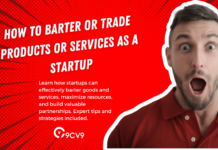


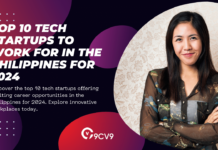
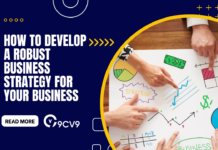






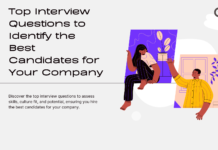


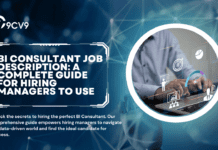





![Writing A Good CV [6 Tips To Improve Your CV] 6 Tips To Improve Your CV](https://blog.9cv9.com/wp-content/uploads/2020/06/2020-06-02-2-100x70.png)


